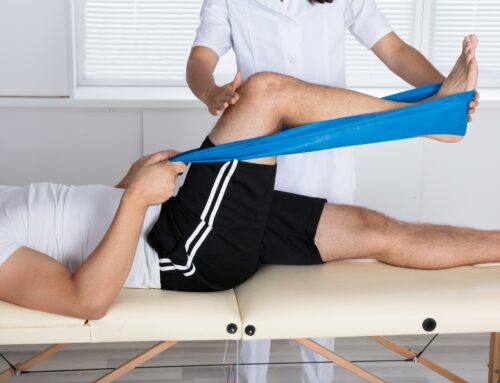10 Ways Physical Therapists Help Slow the Progression of Parkinson’s Disease
It is well-known that exercise of any kind is good for each person’s health, both body and mind. But did you know that it is even more important for those living with Parkinson’s disease? Physical therapy is key to slowing down the disease. And it helps those affected to stay as independent as possible.

Improving mobility, strength, and balance
Staying mobile and self-sufficient is top of mind for people living with Parkinson’s disease. Stiffness is also a known problem with the disease. This rigidity can cause poor posture and pain that leads to other functional problems. A physical therapist can help with these problems. PTs guide people with Parkinson’s through moves and stretches to increase mobility, strength, and balance.
Reciprocal patterns
Parkinson’s disease may affect a patient’s ability to swing their opposite arm and leg while walking. A physical therapist can help reinforce this reciprocal movement, and other side-to-side and left-to-right patterns. They may use a reclining bicycle, elliptical machine, as well as rowing and boxing activities to improve movement.
Balance work
Parkinson’s disease can affect a patient’s balance system. This can make them unstable when walking, reaching, or climbing, etc. Being unstable can lead to a fear of walking in public or crowded spaces. A PT will work with you on specific exercises. This work will address the issues that impact balance and walking. Balance work promotes increased independence and reduces the risk of falls.
Stretching and flexibility
It is common for patients with Parkinson’s disease to develop tight hip, thigh, and calf muscles. Often, the shoulder and trunk become tight and limited, as well. A physical therapist can teach patients how, and how often, to stretch properly throughout the day to ward off tightness.
Strength training
With age, muscles naturally weaken. Research suggests that muscle weakness is an even greater problem for patients with Parkinson’s disease. Depending on the stage of the disease, a PT might teach you exercises with weights or bands for resistance. Pool-based therapy, using the water’s natural resistance, might also be used to improve weakness.
Maintaining daily independence
Simple actions that others take for granted can become more and more difficult for someone with Parkinson’s disease. Routine physical therapy can help conquer these daily challenges that can often become overwhelming. Improving mobility and strength through physical therapy helps patients improve their daily lives.
Getting out of bed
For patients with a stiff torso and hips, rolling out of bed can be a hard task. A physical therapist can work with you to improve your hip, shoulder, and spine flexibility. They can train you on specific strategies to roll, scoot, and turn your body to make it easier to get out of the bed. These tips will also help save much-needed energy.
Getting dressed
It takes a lot of flexibility, balance, and coordination to get dressed each morning. Twisting and reaching to put on a shirt and pulling on pants can be a struggle for patients with Parkinson’s disease. Physical therapists break down each movement into small exercises to improve the ability to get dressed. If buttons, zippers, and laces become too hard, an occupational therapist may be able to help.
Car rides
To get in and out of the car — or any chair — takes strength and flexibility in the hips and core. Someone with Parkinson’s might attempt to avoid this task. A physical therapist can help patients regain the strength needed to take a car ride. PTs offer tips and strategies to rewire the brain-body-movement connection. They provide techniques to allow people with Parkinson’s disease to enjoy being out and about.
Grocery shopping
One of the most challenging symptoms of Parkinson’s disease is losing the ability to do 2 things at once. Walking and searching the grocery aisle, while steering around other people and carts, can cause trouble walking. This difficulty can lead a person to freeze or have anxiety. Physical therapists identify which exercise strategies will help the most, depending on each patient’s situation. PTs help their patients practice the appropriate exercises to decrease their anxiety and risk of injury.



